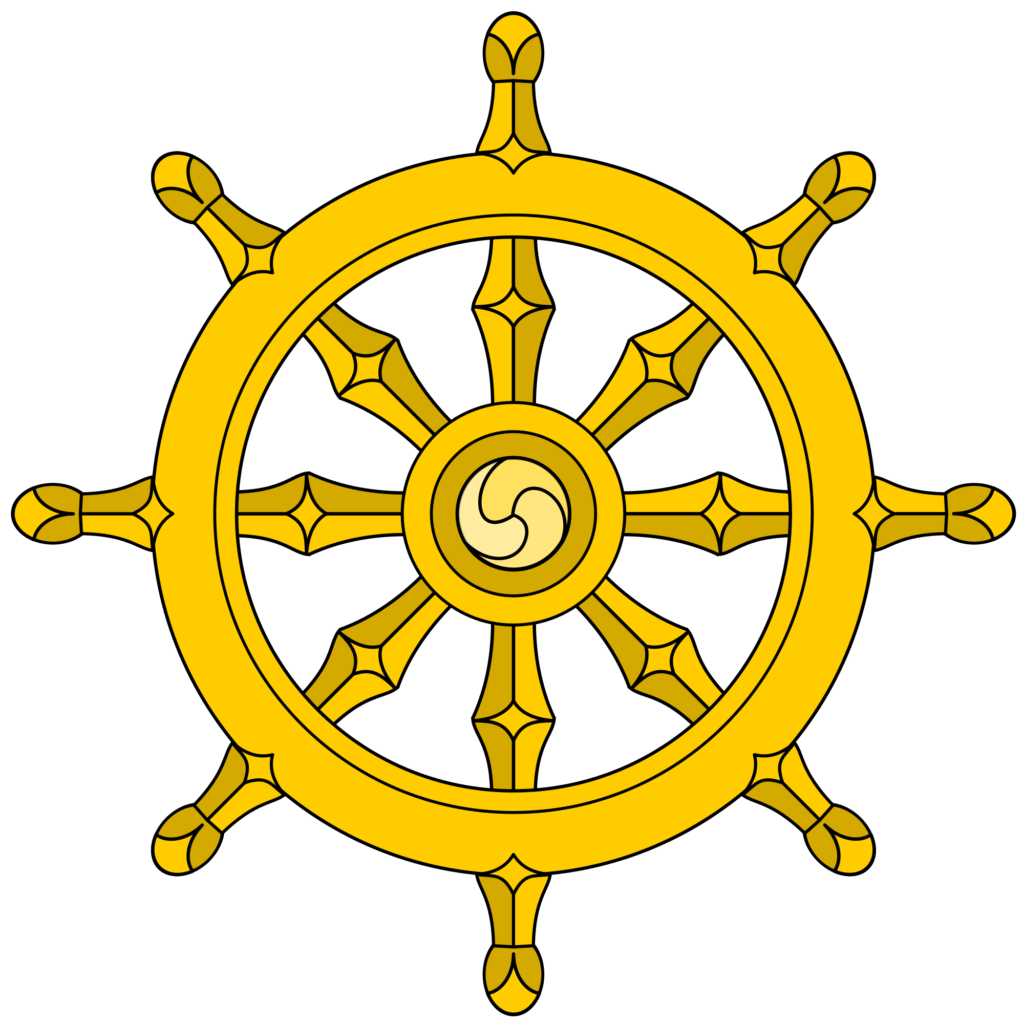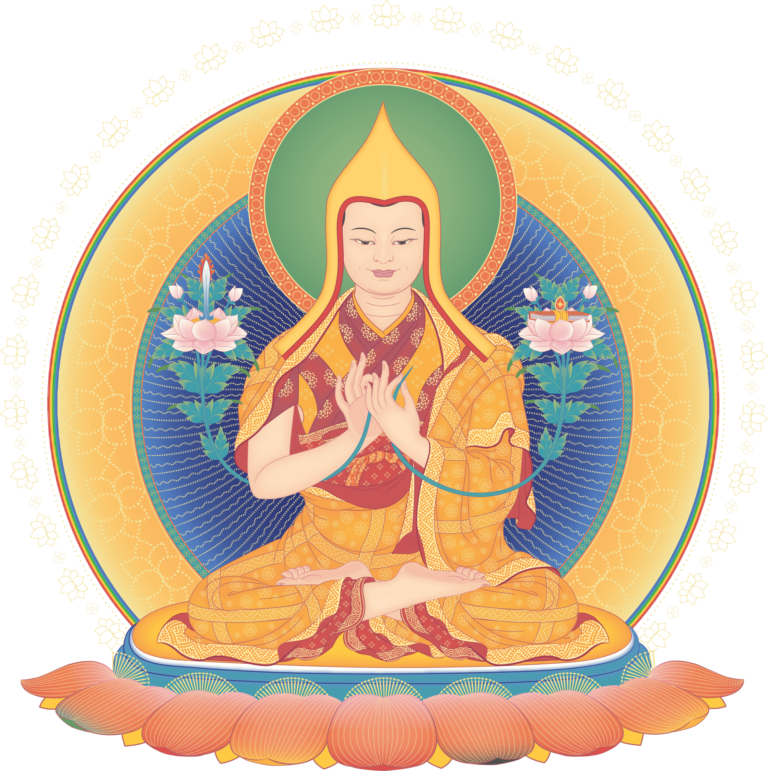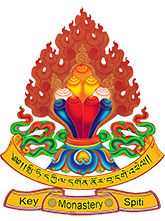Pujas
A puja consists of meditations, visualisations and prayers, including taking refuge and generating bodhicitta, followed by an elaborate version of the seven limb practice: making prostrations and offerings, confessing one’s negativities, rejoicing in the good deeds of oneself and others, requesting the Buddhas to remain in samsara and teach, and dedicating the created merits (positive energy). Mantras, praises and requests are also usually recited.
The purpose of a puja is to purify one’s negative energy thus clearing away obstacles in life and spiritual practice for oneself and others. One also creates new positive energy and this is dedicated for the fulfillment of one’s own wishes and the wishes of others, including the most profound and expansive wish of all: to become a fully enlightened Buddha for the benefit of all beings.


Pujas
A puja consists of meditations, visualisations and prayers, including taking refuge and generating bodhicitta, followed by an elaborate version of the seven limb practice: making prostrations and offerings, confessing one’s negativities, rejoicing in the good deeds of oneself and others, requesting the Buddhas to remain in samsara and teach, and dedicating the created merits (positive energy). Mantras, praises and requests are also usually recited.
The purpose of a puja is to purify one’s negative energy thus clearing away obstacles in life and spiritual practice for oneself and others. One also creates new positive energy and this is dedicated for the fulfillment of one’s own wishes and the wishes of others, including the most profound and expansive wish of all: to become a fully enlightened Buddha for the benefit of all beings.

Guru Puja(Yoga)
The Guru Puja(Yoga) is a practice consisting of making offerings to and requesting inspiration from the Guru, seen as the embodiment of the Three Jewels (Buddha, Dharma and Sangha), visualized in the form of Je Tsongkhapa surrounded by the merit field who come to help us to accumulate merit through them so that is why it is called the field of merit. Spiritual vows and commitments, which might have degenerated, are also restored through the practice of the tsog (feast offering). In this practice, we unite our minds with the holy mind of the Guru, who is considered the root and life force of the spiritual path, in order to receive blessings and generate realizations on the path to Enlightenment. The practice of Dharma means the practice of seven limbs or seven branches. While we are doing Guru Yoga, we are also are practicing the seven limbs of practice through the Guru and Guru Je Tsongkhapa.
TARA PUJA
Tara represents the quick wisdom and compassion of all the enlightened beings in a female form. Praying to Tara eliminates obstacles to the fulfillment of our wishes for successful Dharma activities and our spiritual progress. Anyone who wishes to have material prosperity, good health and can attain these by paying homage and reciting Praises to the Twenty-one Taras and reciting her mantra, ” Om Tare Tuttare Ture Soha.” ” Buddha Vairochana blessed Tara and prophesied to her that at the end of the aeon, in those lands and worlds where pujas, prayers, and rituals of Tara are recited, as a result of these prayers, the many diseases, troubles, and disturbances caused by evil spirits and by human beings would be pacified and resolved.”


TARA PUJA
Tara represents the quick wisdom and compassion of all the enlightened beings in a female form. Praying to Tara eliminates obstacles to the fulfillment of our wishes for successful Dharma activities and our spiritual progress. Anyone who wishes to have material prosperity, good health and can attain these by paying homage and reciting Praises to the Twenty-one Taras and reciting her mantra, ” Om Tare Tuttare Ture Soha.” ” Buddha Vairochana blessed Tara and prophesied to her that at the end of the aeon, in those lands and worlds where pujas, prayers, and rituals of Tara are recited, as a result of these prayers, the many diseases, troubles, and disturbances caused by evil spirits and by human beings would be pacified and resolved.”

Sutra Recitations
The Buddha’s teachings, known as Sutras, were given over a 45-year period and fill 100 volumes. Buddha himself said that studying, meditating upon, and even just reading/reciting these Sutras can bring us tremendous purification and merit, help us quickly develop our wisdom and compassion, and lead us toward Enlightenment.
Bodhicaryavatara: An Insight into Santideva's Bodhisattva Way of Life ( Ch.1: V.27 to 36)
Chapter 1: The Benefits of the Awakening Mind Lochen Rinpoche continues from Verse 27 to Verse 36. ( End of Chapter 1). Additional Teaching Videos.
Bodhicaryavatara: An Insight into Santideva's Bodhisattva Way of Life ( Ch.1: V.27 to 36)
Chapter 1: The Benefits of the Awakening Mind Lochen Rinpoche continues from Verse 27 to Verse 36. ( End of Chapter 1). Additional Teaching Videos.
The cause and effect - Karma
by H.E. Lochen Tulku Rinpoche in Singapore
Taking Refuge in the Three Jewels; what is enlightenment?
by H.E. Lochen Tulku Rinpoche in Singapore
Generating the Bodhimind
by H.E. Lochen Tulku Rinpoche in Singapore
The Diamond Perfection of Wisdom Sutra (The Diamond Cutter Sutra)The Vajracchedika-prajna-paramita Sutra.
Transcribed by: Khen Rinpoche (Jangchup Choeden), Abbot of Gaden Shartse Monastery
Oral Transmission of The Three Principal Aspects of the Path - Je Tsongkhapa
by H.E. Lochen Tulku Rinpoche in Singapore
How to practice Gaden Lhagyama
by H.E. Lochen Tulku Rinpoche in Singapore
The Heart Sutra- The Essence of all the teachings of the Buddha
by H.E. Lochen Tulku Rinpoche in Singapore
Basic Vajrayana Practices & Offerings
by Geshe Dorje Tenzin
